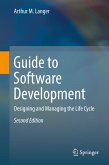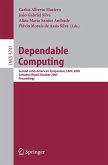The challenge of improving the quality and process of implementing enterprise software has only become more complex, and software products for enterprise resource planning (ERP) often fail to provide quicker and more cost-effective solutions. Furthermore, the decision whether to make or buy software is not a simple one.
This Guide to Software Development addresses the problem of how best to make such decisions, and what effect such decisions have on the software development life cycle (SDLC). Offering an integrated approach that includes important management and decision practices, this text/reference explains how to create successful automated solutions that fit user and customer needs, by mixing different SDLC methodologies. Guiding readers through the theory, and applying this to the realities of practice, the book offers essential advice on defining accurate business requirements, and managing change.
Topics and features:
Suitable for students of introductory project management, or analysis and design, this practical guide/reference will also be of interest to practicing IT professionals and executives involved in managing software projects, in addition to business managers responsible for ERP-type projects.
This Guide to Software Development addresses the problem of how best to make such decisions, and what effect such decisions have on the software development life cycle (SDLC). Offering an integrated approach that includes important management and decision practices, this text/reference explains how to create successful automated solutions that fit user and customer needs, by mixing different SDLC methodologies. Guiding readers through the theory, and applying this to the realities of practice, the book offers essential advice on defining accurate business requirements, and managing change.
Topics and features:
- Provides concrete examples and effective case studies
- Focuses on the skills and insights that distinguish successful software implementations
- Covers management issues as well as technical considerations, including how to deal with political and cultural realities in organizations
- Identifies many new alternatives for how to manage and model a system using sophisticated analysis tools and advanced management practices
- Emphasizes how and when professionals can best apply these tools and practices, and what benefits can be derived from their application
- Discusses searching for vendor solutions, and vendor contract considerations
Suitable for students of introductory project management, or analysis and design, this practical guide/reference will also be of interest to practicing IT professionals and executives involved in managing software projects, in addition to business managers responsible for ERP-type projects.
Dieser Download kann aus rechtlichen Gründen nur mit Rechnungsadresse in A, B, BG, CY, CZ, D, DK, EW, E, FIN, F, GR, HR, H, IRL, I, LT, L, LR, M, NL, PL, P, R, S, SLO, SK ausgeliefert werden.
"This well-written book will serve as an apt resource for the software development community, especially those working in legacy modernization and digital transformation projects. Many relevant software development topics are discussed in detail and practical tools in the form of templates and checklists are provided." (Computing Reviews, June, 2017)









